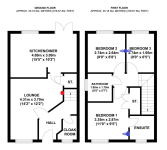In the process of buying a house. It's a reasonably new build (5 years old) and currently only has a master phone socket, no ethernet. I'm planning on getting a contractor in to wire the place with ethernet, from the downstairs master socket up to each of the three bedrooms. One of those bedrooms will be a home office, so I absolutely want ethernet connectivity. WiFi is alright, but cabled is the one for me.
Now, can anyone advise on whether CAT7 is worth it over CAT6? I've seen all the theoretical stuff in research online, but it'd be nice to get personal feedback and insights into others' experience.
Any tips? Any regrets?
Now, can anyone advise on whether CAT7 is worth it over CAT6? I've seen all the theoretical stuff in research online, but it'd be nice to get personal feedback and insights into others' experience.
Any tips? Any regrets?




